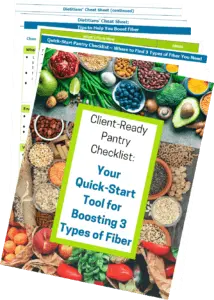
How to Get the Most from an Activity Tracker: 9 Top Tricks
Does using a pedometer or other physical activity tracker work to help you get more active?

Sometimes a dog’s not enough to help you create a healthy lifestyle
One important point is choosing the right tracker for you. Even then, several tweaks in how you use it can make or break your likelihood of successful results.
Some people refer to their activity trackers as the cornerstone of getting and staying fit and healthy. Others try one, say “Meh”, and before long, it’s tucked away in a drawer, never again to see the light of day.
Here are 9 strategies for getting results….
Pedometers have been part of many research studies. Some are studies designed to test pedometers’ role in supporting physical activity as part of a healthy lifestyle; others, because of positive results seen, use pedometers in interventions targeting exercise for some aspect of health or weight.
Here I’ll share tips based on this research and on my own experience with pedometers. I’ll also share input from colleagues who won Accusplit* pedometers in raffles run through my Smart Bytes® blog or one of my conference presentations.
Five Don’t-Miss Steps
1) Set a Smart Goal. Step counts mean little if you don’t have a target. The key for a motivating target is that it’s appropriate for you as an individual. When you first get a pedometer, you are excited to jump in and change habits, but most successful programs begin by asking participants not to make any changes in their usual routine. Get a 4- to 7-day baseline to establish your “old normal” starting point.
Some programs take the highest day’s step count and add only 500 more steps for an initial goal. For most people, that adds just 5 more minutes of walking per day, so it offers a no-fail target that’s great for those who are lacking confidence about boosting activity. For a reachable target that will build fitness faster, set your first target by adding either 10% or a flat 2,000 steps or so to your baseline step count.
2) Track Progress. You can keep track of your step count by writing it on a calendar or chart (perhaps on a wall or cabinet right next to where you’ll take it off each day?). Or enter it on your cell phone, computer or tablet. Depending on the type of tracker you use, some allow you to sync your data with an online program. Deborah Serenius, RD, LD, one of my Ohio colleagues, tracked results on her iPad right before bed each night.
Keeping track is important to hold yourself accountable for the goals you set. It helps you keep from being discouraged after an unusually inactive day, if you see that overall you are increasing activity. It also provides a reality check if what you are telling yourself is an unusually sedentary day is on the slippery slope of being common for you again.
For both accountability and behavior change support, I find it helps to check my pedometer a couple times during the day. I like to check at lunchtime and at the end of the workday. If I’m trending toward a low day at either of these points, there’s still time to turn it around. (I gave an example of this in a previous post, describing a time I was shocked to see my total at 5:00 pm when attending a conference.)
3) Use Tracking Data to Learn and Strategize. One of my RD colleagues who won a pedometer emphasizes that if you don’t meet a goal, the key is to take a moment to consider why and what you will do differently next time. To keep focused on learning from the information a tracker provides, I’ve sometimes coached clients to say, “That’s interesting” or “I wonder” each time they checked their step count.
4) Gradually Advance Your Goal. Each week, take your step goal up another notch. If you add another 1,000 or 2,000 steps to the previous week’s goal, for most people that should take no more than another 10 to 20 minutes of walking accumulated through the day. Your ultimate target may vary depending on your health goals. Focus on using this time as a chance to try out different strategies for reaching a more active lifestyle so that when you reach a new level of fitness, you can maintain it.
5) Use Your Tracker Consistently. Having learned what I need to do to reach my step goal, and knowing how much better I felt when I made time for more walking, I thought I had nailed the problem of too much sitting. Sadly, I can easily find myself in the same shoes as so many others from whom I hear, “I was walking more when I wore my pedometer.” For most people, sporadic use means sporadic days of more activity. Some is better than none, but sporadic activity is not the same as daily activity, and does not allow new habits to become enmeshed as part of your lifestyle.
Attitude & Self-Talk are Key, Too
6) Be realistic about trackers. Trackers aren’t magic. Pedometers and other activity trackers are excellent tools to support you in learning to live a healthier lifestyle. You still need to make the choice to take care of yourself and move.
7) Focus on what you want from moving more. When you let an activity tracker turn into a cruel taskmaster and see your step target as another in a long set of rules, you’re in trouble. It might help you move more in the short-term, but it’s likely setting up rules against which you’ll want to rebel in the long-term.
One of the pedometer winners gave it to a patient whom she thought was truly getting ready to change behavior. My colleague writes that it turns out she is “in the contemplation stage” – a time when one is not ready to actually initiate changes – and the pedometer has so far gone unused.
8) Don’t let disappointment or frustration lead to hurtful self-talk. There will be days when you don’t meet your target. Some people don’t have issues with that. Depending on personality, family patterns, history of dieting and other factors, other people take each target miss as an occasion to tell themselves that they are a lazy slob unable to change, or that this whole “walking more” thing is just too much for them. If you think that will motivate you, I can only say that research does not support that, and practical experience tells me it’s far more likely to set you up for more failure.
As you review your day’s tally, talk to yourself with the compassion you would show your dearest friend. Stay focused on what you will learn to help you create a doable healthy lifestyle, bit by bit.
9) Develop a habit of positive, encouraging thoughts. A tweet by Diana Keogh of ShareWIK media recently led me to a blog post by Dina Zeckhausen. The post was about training for a triathlon, but what she wrote about self-talk struck me as pertinent to all who are trying to move forward with more activity. I urge you to read Dina’s post for more, but here are a few of my favorite examples of her self-talk that we’d all do well to practice.
♥ I appreciated the stillness of the early morning as the world was waking up around me.
♥ I congratulated myself for working toward an important goal.
♥ I reminded myself that getting out of the enveloping warmth of bed was harder than staying in it, and that instant gratification didn’t lead to the pride of accomplishment.
♥ I felt pleased that I was one run closer to being in better shape.
♥ I acknowledged with gratitude that I lived in a healthy body that was capable of running.
♥ I thanked the universe that I was simply alive.
The Bottom Line:
Pedometers and other activity trackers can be terrific tools to assist you in creating a healthy lifestyle that will allow you to live the life you want to live. Just owning one and leaving it in a drawer – or even clipping it on without some approach to use what it shows you – won’t get you where you want to go. The potential is there, if you choose to give it a try.
Let’s talk: If you’ve tried using some form of activity tracker, please share what you’ve learned in the Comments section below. Let’s step forward and support one another in health!
Get some great practical ideas in 100 Ways to Add 2000 Steps, courtesy of the America on the Move Foundation, Inc.
The American Institute for Cancer Research (AICR) offers tips to get started boosting physical activity, too.
*My sincere thanks to Ron Sutton, owner of Accusplit, Inc., (http://www.accusplit.com ) for donating the pedometers in my raffles. This is the pedometer I purchased and love using. It passes the accuracy test I described in a previous post about choosing pedometers. And one of the pedometer winners commented on how well it stayed on compared to previous types she’d tried. Accusplit® has not paid to be part of these giveaways or tracker-oriented blog posts.
Thanks also to Deborah Serenius, RD, LD (@debsereniusRD) of Kettering, Ohio, for sharing her experiences with the pedometer she won. Sincere thanks as well to colleagues who also provided input but asked to remain anonymous.
Tudor-Locke C, Schuna JM Jr. Steps to preventing type 2 diabetes: exercise, walk more or sit less? Front Endocrinol (Lausanne). 2012; 3:142.
Harrington DM, Champagne CM, Broyles ST, Johnson WD, Tudor-Locke C, Katzmarzyk PT. Steps ahead: a randomized trial to reduce unhealthy weight gain in the Lower Mississippi Delta. Obesity (Silver Spring). 2014 May;22(5):E21-8.
Kaminsky LA, Jones J, Riggin K, Strath SJ. A pedometer-based physical activity intervention for patients entering a maintenance cardiac rehabilitation program: a pilot study. Cardiovasc Diagn Ther. 2013 Jun;3(2):73-9.
Article by speaker and author @KarenCollinsRD
Published : September 19, 2014
Tagged: cancer prevention, exercise, healthy habits, healthy lifestyle, heart health, metabolic syndrome, mindset, pedometers, physical activity, sedentary lifestyle, self-talk, weight control
Meet the author/educator
I Take Nutrition Science From Daunting to Doable.™
As a registered dietitian nutritionist, one of the most frequent complaints I hear from people — including health professionals — is that they are overwhelmed by the volume of sometimes-conflicting nutrition information.
I believe that when you turn nutrition from daunting to doable, you can transform people's lives.
Accurately translating nutrition science takes training, time and practice. Dietitians have the essential training and knowledge, but there’s only so much time in a day. I delight in helping them conquer “nutrition overwhelm” so they can feel capable and confident as they help others thrive.
I'm a speaker, writer, and nutrition consultant ... and I welcome you to share or comment on posts as part of this community!


